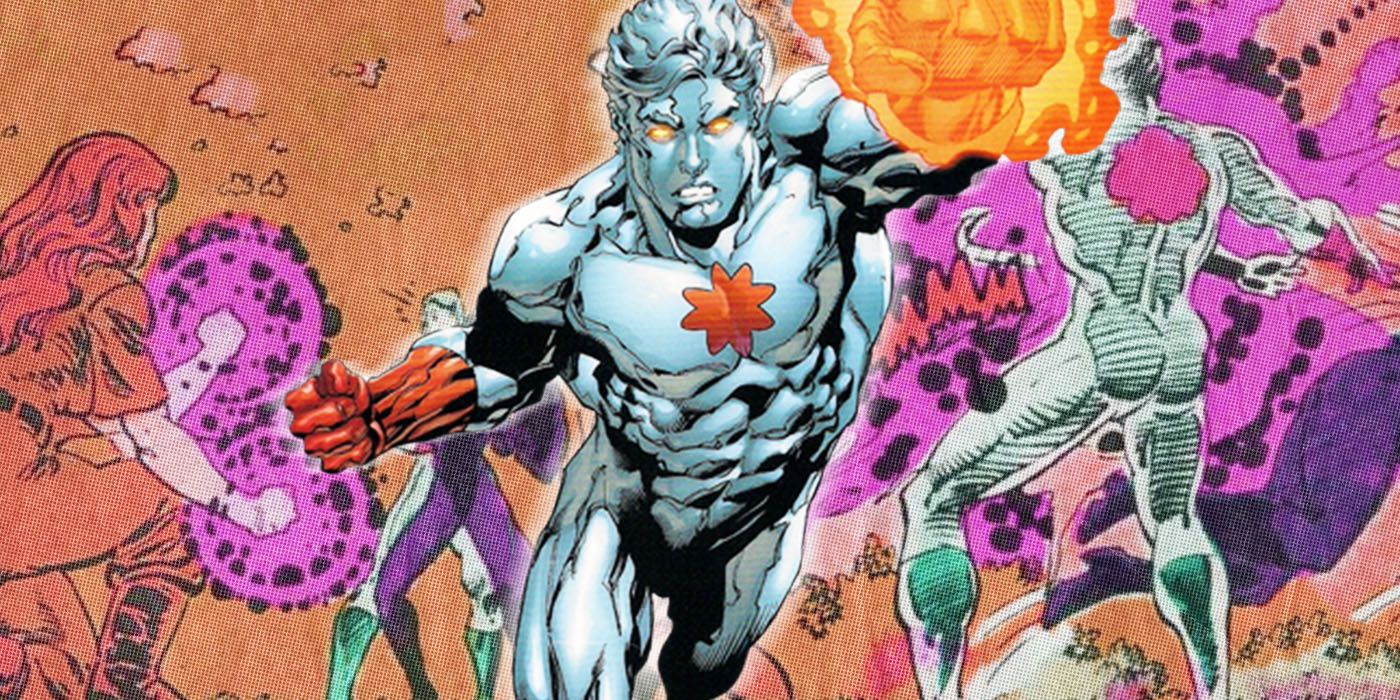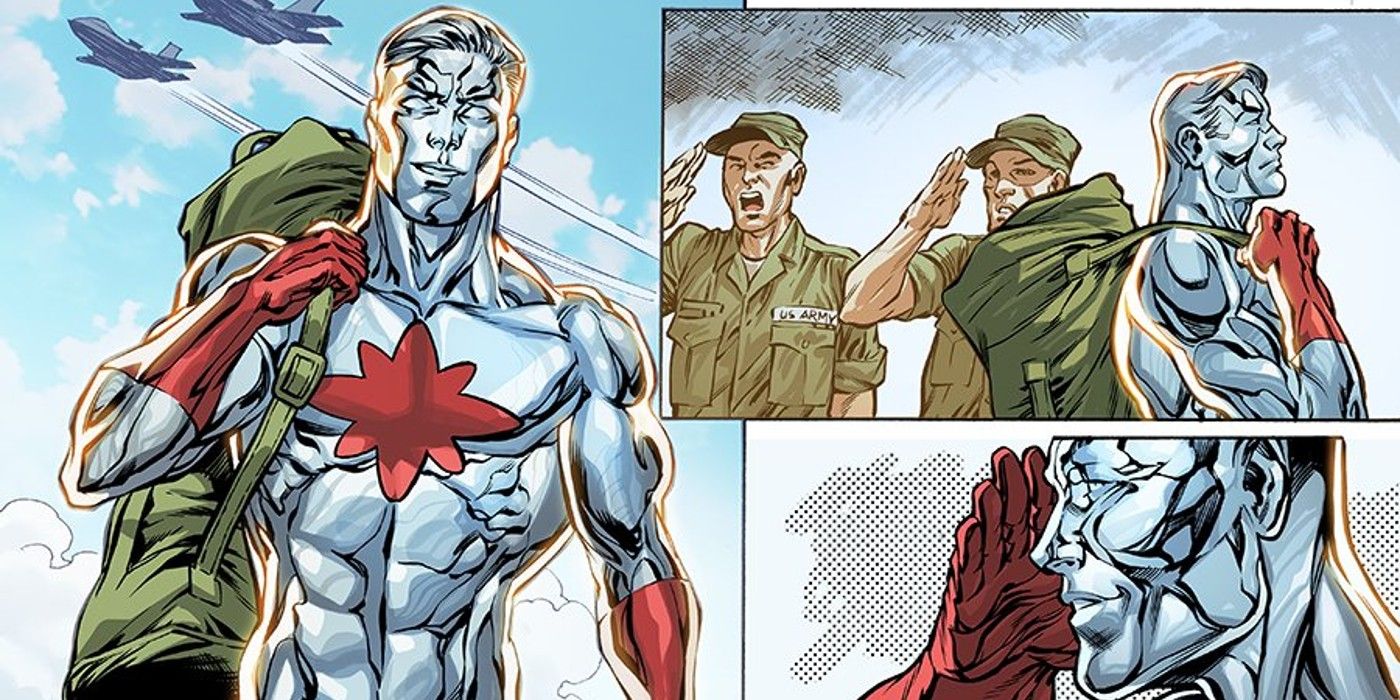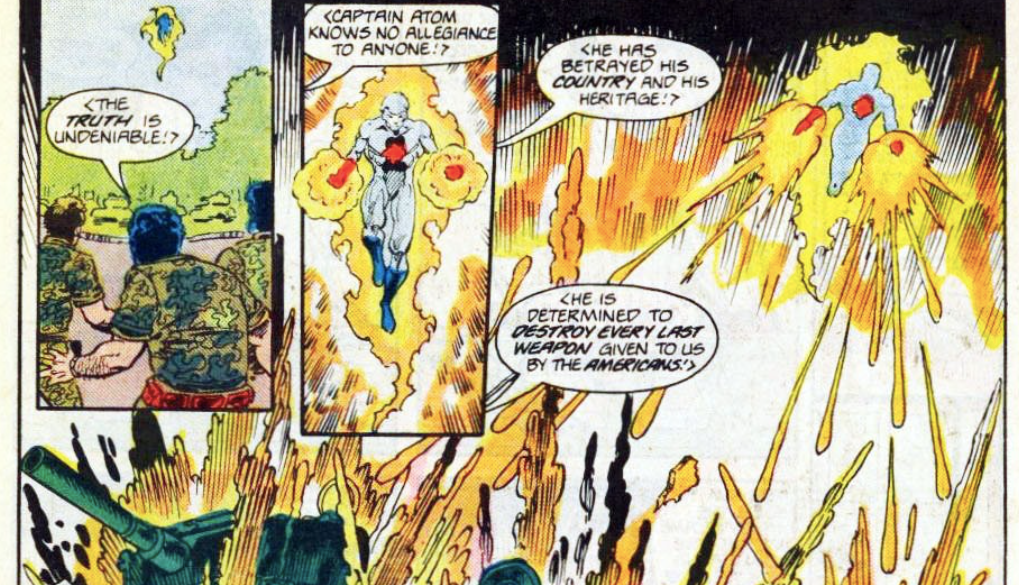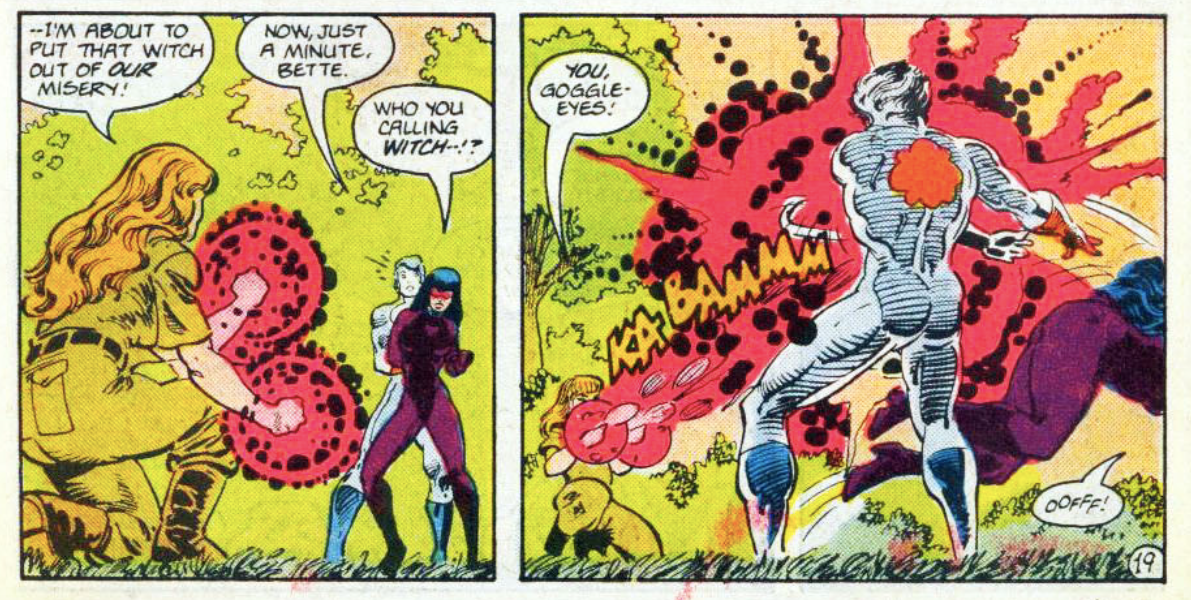DC Comics' militaristic superhero Captain Atom has often prioritized the orders of the United States Government over his own moral conscience while on superhero missions. However, a tragic war in Central America broke the silver-coated hero and caused him to try and stop the war by disarming both Separatist rebels and even American troops to force a cease fire. Unfortunately, Captain Atom could not comprehend humanity's seeming affinity for deadly conflict. After a brief engagement with a Suicide Squad member, his peace plan had devastating consequences for everyone caught in the conflict.
This drastic action taken by Captain Atom came about after several crisis' of consciences within the Captain Atom comic book series (by Cary Bates and Greg Weisman) which forced him into several amoral actions like emotionally manipulating Blue Beetle and allowing the supervillain Doctor Spectro to stage fights for good public reception. Having to commit these actions for the sake of the American Government slowly disillusioned the air force officer turned superhero. And so when he witnessed the effects the Cold War was having in Central America, Captain Atom unfortunately broke down.
Captain Atom's Heartbreaking Experience In Central America
During Captain Atom #21 (by Bates, Weisman, Pat Broderick, Steve Mitchell, and Shelley Eiber), Captain Atom, under his secret identity of Officer Nathaniel Adams, took up a mercenary contract by a man named 'The Ancient Mariner' to help pay off some debts. The Ancient Mariner tasked Nathaniel and two other ex-military mercenaries to travel to a Central American warzone to try and locate his missing son and return either his son or his son's corpse back to him.
Meeting up with a group of American-backed resistance soldiers, the three eventually found that the Ancient Mariner's son had tragically died in combat. With the corpse retrieved, Nathaniel and his two other mercenary companions helped train some of the resistance troops. During his time there, Captain Atom heard tales of brutality from both the American-backed troops and the Soviet Union-backed Separatist troops. Shortly thereafter, he saw the two sides decimate one another -- and the two mercenaries he came with being blown up.
After the skirmish, Nathaniel was abducted by the supervillain, and occasional Suicide Squad member, Plastique. It is revealed she was acting as a meta-human liaison for the Soviet Union troops -- much like Captain Atom's role with the United States government. With this understanding that this conflict was not a matter of good versus evil, he sheds his secret identity to become Captain Atom and makes himself publicly known to both sides of the Central America battlefield.
Captain Atom Began Opposing Both Sides
After witnessing the travesties caused by both sides of the conflict, Captain Atom began attacking both sides, destroying their military vehicles and stealing all manner of weaponry both the Soviet Union Separatists and the American supported Rebels had at their disposal. This caused a massive international incident, with the Justice League International Embassy being swamped by international ambassadors, government agents and even representatives of the Vatican, all of whom wanted to know why Captain Atom had gone rogue.
Plastique also caught wind of Captain Atom's betrayal and attempted to capture the hero for the sake of her Soviet allies and managed to abduct him after he had returned to the resistance group camp under his secret identity -- which Plastique knew. However, Captain Atom was able to briefly manipulate her into a false sense of security by playing on Plastique's emotions. This allowed the hero to engage the supervillainess in combat.
Captain Atom's Rampage Brought In The Suicide Squad
Maxwell Lord, the Justice League International's manager, was unable to give any justifications for Captain Atom's erratic behavior. And so Amanda Waller is given permission to send another member of the Suicide Squad to apprehend Captain Atom during Captain Atom #22 (by Bates, Weisman, Pat Broderick, Bob Smith, and Eiber). Waller sent Nightshade to Central America and arrived just in time to watch Plastique and Captain Atom's fight. This resulted in a three-way battle between Captain Atom, Nightshade and Plastique. However the fight was short-lived, as all three parties soon became aware of another military skirmish occurring between the opposing military forces. Captain Atom, who believed the conflict was over, was horrified to realize that the two armies had begun fighting with sticks, stones and even shovels to try and win what the superhero considered to be a moot conflict.
Thoroughly demoralized by the realization that his attempt to stop the war had failed, Captain Atom submitted himself to the custody of the Suicide Squad. And yet, his relationship with the military scientist Doctor Heinrich Megala dropped all charges of treason. However, this did little to change Captain Atom's somber mood as he buried himself further into the servitude of the United States Government above all else. This storyline acted as a great insight to why Captain Atom often defers to the judgment of the United States Government over his own moral conscience. This storyline demonstrates he lost confidence in his ability to successfully help others, a mindset that put him at odds with his Justice League compatriots for decades to come.




